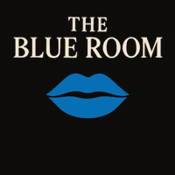
Overview
Synopsis
David Hare’s The Blue Room reimagines Arthur Schnitzler’s La Ronde for a modern audience, presenting a series of ten interconnected encounters that explore the complexities of desire, intimacy, and power. Each scene features a man and a woman meeting in private, often in a bedroom, hotel, or other intimate space. Their conversations and actions reveal the shifting dynamics of seduction, vulnerability, and dominance. After each scene, one character moves forward into the next, creating a continuous chain that links individuals across different social classes, professions, and emotional states.
As the encounters unfold, the play paints a provocative portrait of modern sexuality, highlighting both the thrill and emptiness that can accompany physical intimacy. Beneath the eroticism lies a critique of the ways in which gender roles, social ambition, and personal insecurities shape human relationships. The cycle eventually comes full circle, connecting the final character back to the first, underscoring the endless and repetitive nature of desire.
Show Information
Context
When The Blue Room premiered at London’s Donmar Warehouse in 1998, it immediately drew widespread attention for its frank depiction of sexuality and its high-profile cast, including Nicole Kidman and Iain Glen. David Hare’s adaptation modernized Arthur Schnitzler’s controversial fin-de-siècle play La Ronde, which had been banned for decades due to its explicit exploration of casual sex and shifting relationships. Hare retained the cyclical structure of Schnitzler’s original while
to read the context for The Blue Room and to unlock other amazing theatre resources!Plot
Characters
| Name | Part Size | Gender | Vocal Part |
|---|---|---|---|
|
Lead |
Female |
Non-singer |
|
|
Lead |
Male |
Non-singer |
Songs
A song with an asterisk (*) before the title indicates a dance number; a character listed in a song with an asterisk (*) by the character's name indicates that the character exclusively serves as a dancer in this song, which is sung by other characters.
Monologues
Scenes
Key Terms
A duologue is a scene or short play written for two characters, focusing on their interaction, conflict, or relationship. It emphasizes intimacy, allowing performers to explore dialogue-driven tension and emotional exchange. Duologues are often used in acting classes, auditions, and minimalist theatre pieces.
A theatrical style that emphasizes simplicity in staging and dialogue to focus attention on core themes and performance.
Naturalism is a theatrical style that seeks to depict life with accuracy, focusing on everyday speech, behavior, and settings. It often highlights ordinary people in realistic environments, emphasizing authenticity over theatricality. Emerging in the late 19th century, naturalism remains influential in contemporary drama.
The Stanislavski System is an influential approach to acting that emphasizes psychological realism and truth on stage. It encourages performers to use personal experience, emotional memory, and objective-driven choices to create authentic characters. This method has shaped modern acting and is foundational to many contemporary training programs.
Subtext refers to the unspoken thoughts, emotions, or intentions that lie beneath a character’s dialogue or actions. It provides depth and complexity to performances, allowing audiences to sense hidden conflicts or desires. Directors and actors often rely on subtext to create nuance and tension in storytelling.
A silent, motionless stage picture created by actors to represent a scene, mood, or moment, often used to end a scene or act symbolically.
Videos
Quizzes
Sorry! We do not currently have quizzes for this guide.
Themes, Symbols & Motifs
Themes
Desire and Power - The play examines how
to read about the themes, symbols and motifs from The Blue Room and to unlock other amazing theatre resources!Quote Analysis
Sorry! We do not currently have learning modules for this guide.
